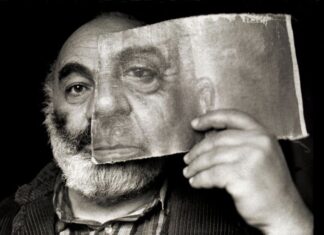By Keith Jones
In his most recent collection, Ozone Journal (2015), the poet Peter Balakian braids the “mental thing” of which da Vinci spoke, with things, as he puts it, “on the horizon.” This new volume extends in feel and atmosphere, as well as in its tripartite form, Balakian’s previous collection of poems, entitled Ziggurat (2010), a marvelous combine, à la Rauschenberg, in which life-writing and grief-work interanimate at scales at once intimate and global. These two works — along with the long poem that inhabits the second section of each of these volumes, a series beginning in Ziggurat (as “A-Train / Ziggurat / Elegy”) and continued in Ozone Journal (as the eponymous “Ozone Journal”) — refine Balakian’s larger poetic project poignantly, with grace and verve.
If his concerns throughout his oeuvre have been with history’s traumatic shards, these recent works have an even more exquisite compression of the proximate and the far-flung, the intimacy with which the global and the earthly is now shared. Indeed a feeling for the collectively shared — a sense that all historical events leave their deposits in each of us — is the broader spirit in which Balakian’s poetry now achingly, now painstakingly proceeds. In this most recent collection, the “Historical” breaks down into personal events and experiences that, while the speaker’s own, are never his own entirely — never, as Thoreau might put it, as a “solitary agent.” Balakian’s is a poetics of the personal vividly mired in the confusions of the impersonal, of crises at various scales that belong more to the thresholds of self than to the self as such — Rimbaud’s “I is the Other” in a globally self-conscious, disaster-strewn age.
Through beautifully wrenching instances, Ozone Journal maintains world-historic specificity (“All day I was digging Armenian bones out of the Syrian desert”), while remaining attuned to the smaller fluctuations, more intimate, that impinge upon and make possible a poetic subject’s interiority. These are poems of rapturous diction — of sensuous, geographically specific, felt peregrinations, the wanderings, or dérive, in which our own historical moment would appear to bring forth a seeker confronted by and recording this, our planetary spectacle. But if it is a work in which the global body politic is crisscrossed, examined, anatomized and exhumed, it is simultaneously a work attuned to the most minute genealogies of self, of personal histories, of a kind of biologism at once vulnerable, fraught, ever undergoing erasures, blurs, and disappearances.
We strolled over the river,










